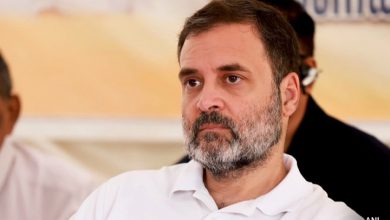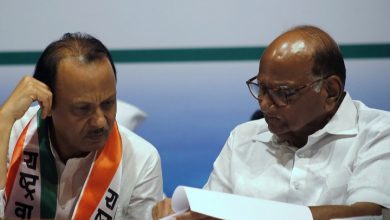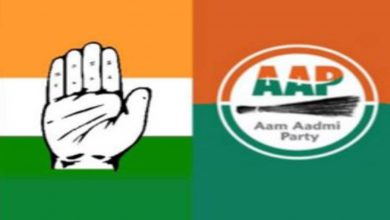Gujarat Assembly Election 2017: Hardik Patel is creation of BJP’s failure to address changing Patidar demography

Patel mein taakat chhe, patthar maathi paani kaadhi sake (the Patels possess the strength to pull water even out of stone).’ Today, people from this community are seen cutting-polishing diamonds and lugging around heavy piles of kaapad on tiny tempos. Wealth or even excess wealth has not changed their work ethic, precision and judgement, handed to them by their farmer forefathers.
Two days ago, at the Congress office in Kamrej, a satellite town of Surat, a mob broke in and smashed up the windows and broke the chairs. When Firstpost reached the office, the Congress party workers were quick to point the finger at the BJP, accusing them of sponsoring the violence. But one strong speculation suggests that this is the handiwork of Patidar leader Hardik Patel’s supporters, who were upset with the Congress for promising 12 to 15 seats in the upcoming Gujarat Assembly elections and giving only two.
The 24-year-old Hardik, who was the face of the Patidar reservation agitation, is building and consolidating a Patidar voter base for the Congress. Soon after the incident, three seats in Surat changed hands. The one at Kamrej was snatched from Nilesh Khumbani and handed over to Ashok Jariwali and in Varachha, Dhirubhai Gajera (formerly with the BJP) replaced Pappan Togadiya. Lastly, heavyweight Dhansukh Rajput was replaced by Hardik-backed Yogesh Patel in Choryasi.
This shift in electoral strategy is a clear indication that the Congress cannot afford to upset Hardik in a state where 45 to 52 of the 189 seats fall in Patidar-dominated regions.
Explaining the rise of Hardik within the Congress, Atul Patel, spokesperson of the Patidar Anamat Andolan Committee told Firstpost that employment and reservation of seats in educational institutions are key issues for the Patidar community at this moment and that the Andolan is raising these demands at the right time.
“In central and north Gujarat, people are still completely dependent on agriculture. People think that the Patel samaaj is rich and can take care of itself but out of the 1.2 crore strong community, five to seven percent are rich and 15 to 20 percent comprise the middle class. The rest are facing economic strain,” said Patel, who toured 620 villages along with Hardik to map the social and economic scenario of the community.
Narendra Modi’s vikas (development) doesn’t trickle down to the ground, he said. “Small-scale industries are facing problems like securing loans and big industries enjoy the ease of doing business.”
Patel stated that the Andolan has become successful as a result of the problems that the government isn’t addressing since the last two decades. “Privatisation of education is another big issue. In Ahmedabad, 15 Mahanagar Palika schools have shut down in the recent times when there’s actually a need for 30 to 40 more government schools,” explained Patel.
He accused the BJP of using ‘saam-daam-dand-bhed’ (every move in the book) to stomp over Hardik’s andolan and also his image. He talks about incidents where the government has slapped Section 144 of the Criminal Procedure Code (CrPC) of 1973 on them, which empowers an executive magistrate to prohibit an assembly of more than four people in an area.
He also talked about instances of his volunteers being beaten up and alleged how the BJP had made efforts to bribe Hardik out of the Congress’ game. “Eventually, when everything failed, they tried to tarnish his image using social media,” explained Patel. In 2012, the BJP had won all 12 seats in Surat and 28 out of the total 35 seats in south Gujarat.
Ask the Patels from textile and diamond sectors of Surat what they think of Hardik and they start criticising Modi first. From blaming the current BJP government for not caring about them to calling the BJP ‘chor’ (thief) for charging five percent GST from poor people to saying that Modi wins only because of social media hype; the anger is visible but the historic-demographic issues aren’t.
The Patels are a formerly-agrarian Patidar community that thrives and survives on the strength of its will. But it isn’t a homogenous lot. There’s a history of demographic divisions that remains un-erased because the BJP didn’t think it was necessary to do so. The Patels are divided into Leuva and Kadva (descendants of Ramayana’s last generation Luv and Kush) and they belong to Saurashtra, a peninsular-fertile belt. In the last forty years, famines and industrialisation have led to a mass migration from Saurashtra to Ahmedabad and Surat. And that is when the threads of internal differences curled up in the region started to spin out like a pattern on a piece of fabric.
Saurashtra’s key towns are Jamnagar, Junagarh, Rajkot, Porbandar and then come the westward areas of Bhavnagar and Amreli. The latter two, which are less than 100 kilometres apart, were a part of the princely state where the Gohils were in power. Owing to the dual locational advantage, that of being closer to the sight of the Royalty and to south Gujarat, they migrated to emerging cities of Ahmedabad and Surat in the 1970s before others. The Patels from the other regions followed suit and populated the diamond, textile and real-estate industries.
The Patels from Bhavnagar and Amreli are more prosperous and a quick verification of backgrounds of owners of diamond and textile industries will show you that. The Patidars from these two regions have also been politically connected. For instance, out of the elected members of the Surat Municipal Corporation during the 2015 elections, 16 were from Bhavnagar and Amreli. But, that’s not where the problem lies.
After the delimitation of constituencies in 2012, Vidhan Sabha seats in 12 districts of Saurashtra were reduced. Following the flow of the population, some seats were moved to Surat and some to Ahmedabad. Today, there are 12 seats in Surat city. In the current election, Patidars from Bhavnagar and Amreli have been given tickets in the constituencies of Surat Uttar, Katargam, Kamrej, Varachha and Karanj. At least in Surat, the andolan and the rise of Hardik is a concretisation of the discontent over years of democratic neglect in the minds of the five to six lakh Patidars from Junagarh, Jamnagar and Rajkot who live there.
Kamrej, constituency number 158 in north Surat, is home to nearly 1.5 lakh Patidars. Dalsukh Bhai Chouvatiya, who traces his roots to Jamnagar was traditionally a BJP supporter. But, to convey the message of anger among the Patidars from eastern regions of Saurashtra, he contested the Kamrej seat in 2012 from the Gujarat Parivartan Party.
Despite the Modi wave, Chouvatia received around 23,000 votes. Although his party has now merged with the BJP, the feeling of neglect among that community has remained and grown. “When people are pained, Hardiks are born. The reason why he is able to successfully consolidate them against the BJP is not really for the guarantee of anamat (reservation). People are aware that there is a constitutional limit of 49 percent and somewhere they even know that the fire of anamat was ignited by the Congress,” Dalsukh Bhai said, giving the example of Katargam, where 1.5 lakh voters are from Junagarh, Jamnagar and Rajkot.
“The BJP could have fielded a young face from that belt but they chose a Patidar from Bhavnagar (Vinu Bhai Moradiya) instead,” he added.
The frustration among the Patel voters who work and live in Surat may look like passion. But, for a community that measures the worth of human effort in carats and metres, no passion is ever without reason.







